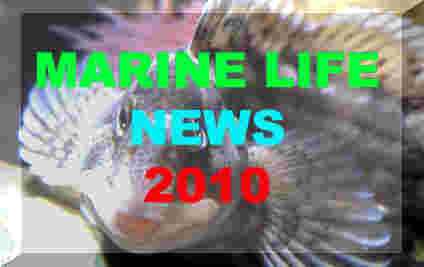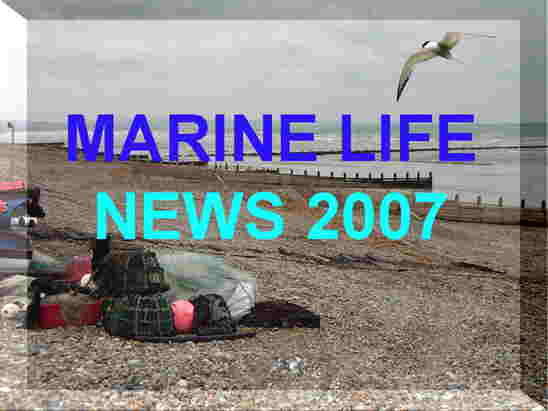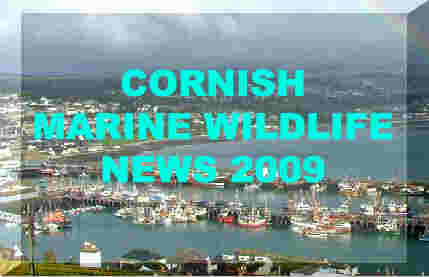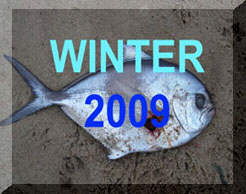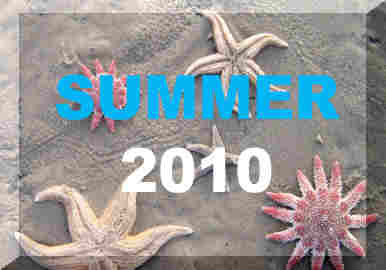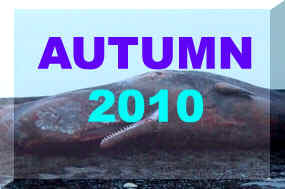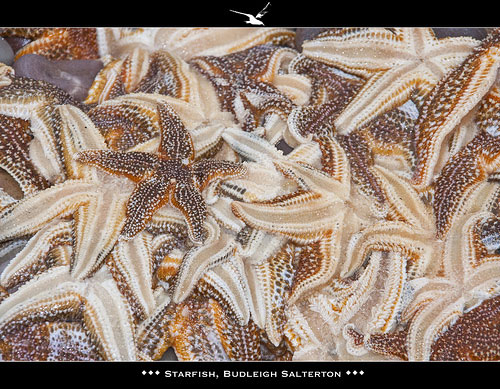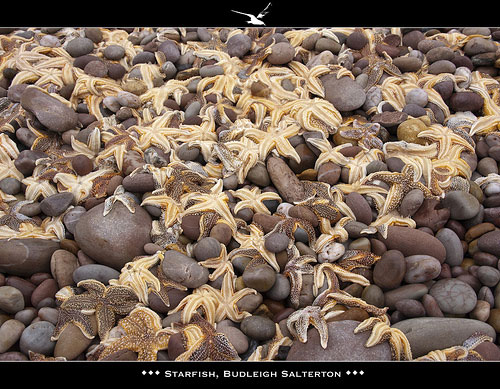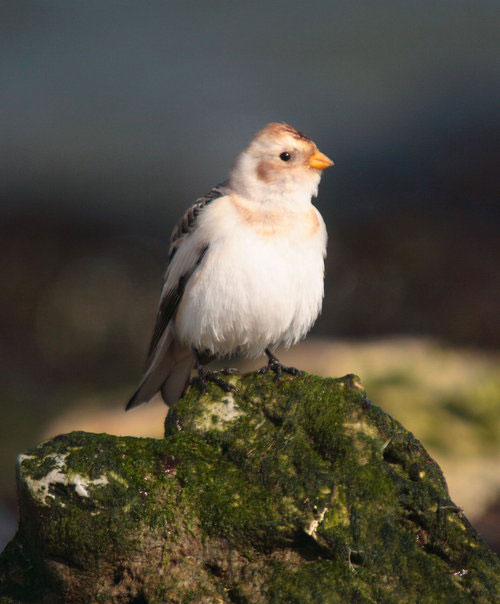EVENTS:
------------------------------------------------------------------------------------------
Adur
World Oceans Day 2010
Participation
of other environmental groups are welcome for Adur
World
Oceans
Day 2010 in Shoreham-by-Sea.
This is an interactive exhibition and all stalls need to be manned. Tables,
chairs and an electrical supply are provided. To allocate
space,
we will need to know of exhibitors in advance.
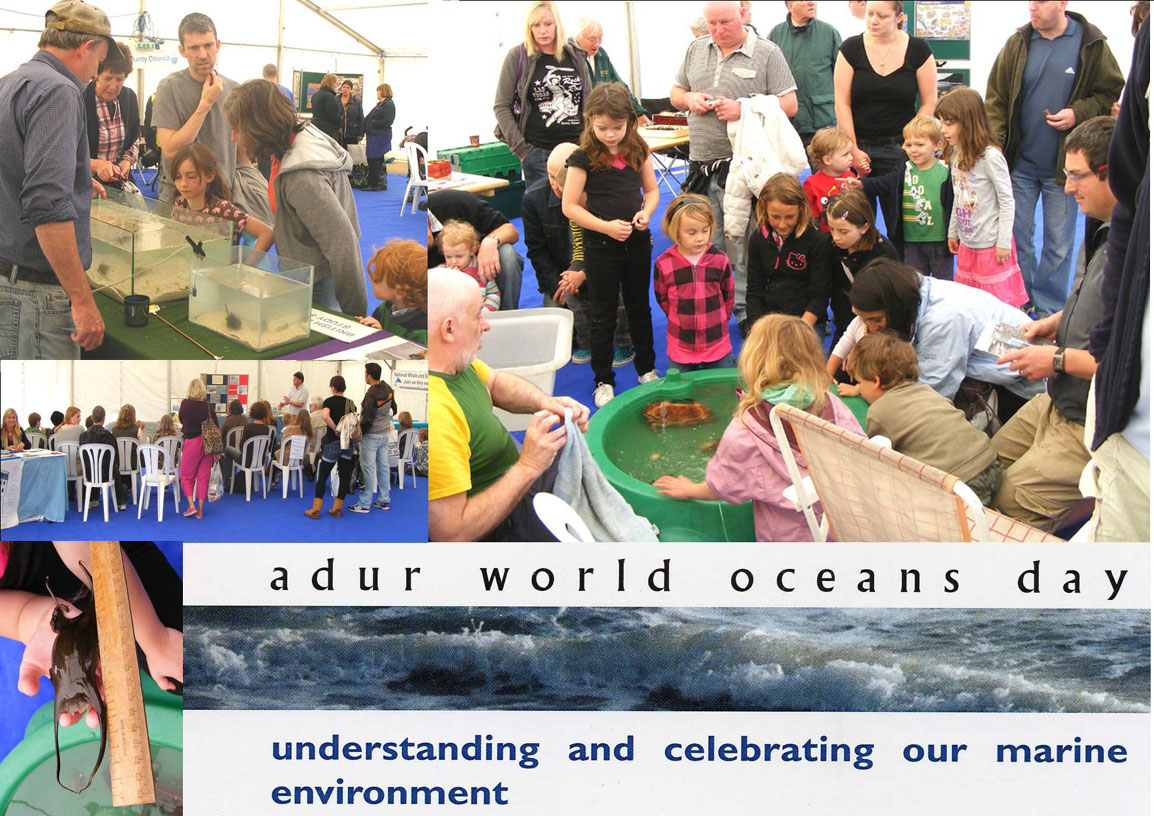
The
date for this year is 5 June 2010.
This will be the 14th consecutive year that this marine exhibition has
been held in Shoreham-by-Sea.
LATEST
NEWS:
31
March 2010
 A
five metre long Minke Whale, Balaenoptera
acutorostrata, was discovered alive
on the morning low tide in the North
Esk River estuary near Montrose,
Scotland. By the time the high tide came in the late afternoon the health
of the mammal had deteriorated and it had to be euthanased.
A
five metre long Minke Whale, Balaenoptera
acutorostrata, was discovered alive
on the morning low tide in the North
Esk River estuary near Montrose,
Scotland. By the time the high tide came in the late afternoon the health
of the mammal had deteriorated and it had to be euthanased.
BMLSS
Cetaceans
14
March 2010
Thousands
of Common Starfish,
Asterias
rubens, were washed up on the strandline
on the shingle beach at
Budleigh
Salterton in south Devon (East
Devon AONB). The line of washed up starfish
stretched for over a mile.
Starfish
at Budleigh Salterton
Photographs
by Tony Herbert
on flickr
Their
usual residence would be feeding on the mussel
beds offshore. From a previous occurrence underneath the chalk cliffs east
of Brighton Marina,
Sussex, it is my surmise that the mass migration occurs because the Common
Starfish have exceeded their food supply offshore.
Perhaps, this occurs because of commercial dredging of the mussels.
BMLSS
Starfish
3 March
2010
A
mystery silvery fish with red dorsal fins washed
ashore dead on the Isle
of Mull, western Scotland was discovered to be a Dealfish
(Ribbonfish
family),
Trachipterus
arcticus.
This
deep water fish is uncommon at depths of over 180 metres and deeper and
it is rarely washed ashore.
17-22
February 2010
A
17 metre long Fin
Whale, Balaenoptera
physalis, was spotted by Jean
Lawson floating about three kilometres off
the shore of north Cornwall. The dead mammal then floated north-east until
five days later the huge whale washed up in a cove near Porthtowan,
37 miles away from the first sighting.
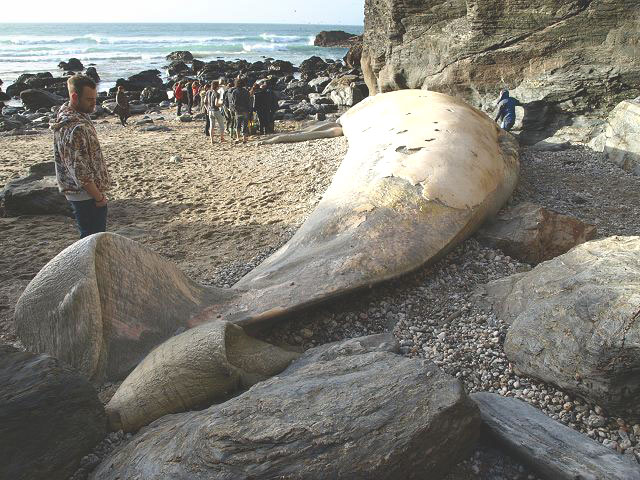
Fin Whale washed
up at Porthtowan
Photograph
by David Fenwick Snr
More
Images
This
is not the first time that the second largest mammal on our planet has
observed drifting with the tides around the British
coast this winter. Another dead Fin Whale
eventually stranded on the Lancashire coast in December
2009.
Previous
Report
Cornish
Wildlife Trust Marine Strandings Network
BMLSS
Cetaceans
1 February
2010
On
going back up Marazion Beach, south Cornwall,
as the tide turned (on the lowest tide of the year)
my partner and I looked around some uppershore pools and discovered five
Giant
Gobies, Gobius cobitus.
in three small pools. They averaged about 18 cm in length.
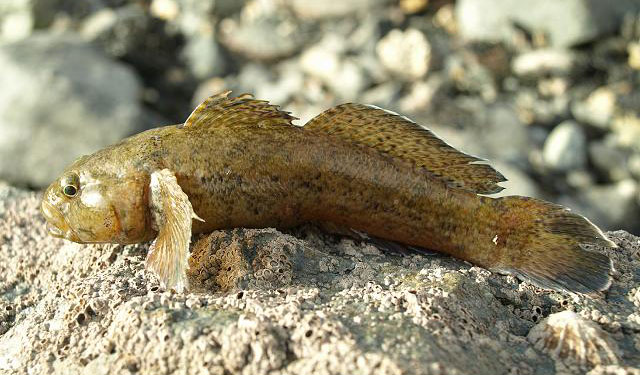
Giant Goby
Photograph
by David Fenwick Snr
This
large goby is a very rare find on the south-west shores of Britain and
the Channel Islands.Their rarity in Britain is because they are on the
northern edge of their natural distribution based on water temperature
for breeding. Also, their bathymetric
zone
is probably in shallow water, and not normally intensively fished, and
not encountered by rockpoolers except on the
low spring tides.
The
Giant
Goby is a protected species under the Wildlife
and Countryside Act Schedule 5.

Full
Report & Photographs (Link)
Aphotofauna
BMLSS
Giant Goby Reports
BMLSS
Gobies
25
January 2010
A
ten metre long Sperm Whale, Physeter
macrocephalus,
was discovered after becoming stranded on rocks at Beadnell
Bay on the Northumberland
Coast, north-east England. The whale had been dead for several days.

The Sperm
Whale is the largest species of toothed whale,
reaching 18 metres (59 ft) and weighing 57 tonnes (male). This whale is
capable of diving to a depth of more than 1000 metres and can remain submerged
for over an hour. A fatty substance in the blood prevents dangerous nitrogen
bubbles
forming in their blood on deep dives, so they are able to descend to great
depths, and return to the surface without decompression.
Whales
& Dolphins in British Seas
The
last BMLSS recorded stranding of a deep water
Sperm
Whale on the English North Sea coast occurred
when two were stranded in separate incidents
on North Sea coasts in February 2006.
Previous
Scottish Stranding 2009
BMLSS
Cetaceans
January
2010
Ray's
Bream,
Brama
brama, continue to be washed up on the North Sea coasts of Northumberland
and on eastern Scottish shores.

Ray's
Bream
Photograph
by Paul Castle,
Highland
Council
At
least fifty Ray's Bream
were discovered by the beach cleaning staff between Roker
and Seaburn, at Sunderland,
Wearside, north-east England.
BMLSS
Ray's Bream
17
- 19 January 2010
After
some easterly swells a dead Short-snouted
Seahorse,
Hippocampus
hippocampus, and a Sea
Mouse, Aphrodite aculeata,
(a worm), were discovered on a beach near Dawlish,
south Devon.
BMLSS
Seahorses
BMLSS
Sea Mouse
14
- 18 & 19 January 2010
After
the heavy seas had dropped on the shore at Blyth,
Northumberland, the gulls fed in a frenzy on a large shoal of Sand-eels,
Ammodytes.
On the subsequent two days I observed a few Ray's
Bream,
Brama
brama, in the same shallows and I speculated that these fish could
have been feeding on the Sand-eels
seen earlier.
BMLSS
Ray's Bream Reports
18
January 2010
Ian
Wrigley discovered this peculiar object on
the sandbank of Whitesands in Old
Town Bay at low tide, at St.
Mary's, Isles of Scilly.
This large jelly-like mass was solid and heavy. The green translucent organism
was quite slimy, and at 30 cm across it was estimated to weight over 1
kg. The most distinctive feature of this mystery
object was the presence of many small
whitish nodules within (5 to 10 mm), visible through the jelly, seemingly
hard but in actual fact soft and they would disintegrate with little
pressure from the fingers. A few darker feathery patches were visible inside.
At
this time of year, the Football Sea Squirt
(yes, it can be the size of a football) Diazona
violacea has lost its zooids and is
an off-white, slightly translucent smooth blob with structures (the new
zooids) visible through the test.
BMLSS
Tunicates
13
January 2010
A
mass stranding of crabs occurred on the Isle
of Thanet
coast, Kent; the crabs have been reported on beaches
at Westbrook, Cliftonville
and Kingsgate,
while smaller numbers have been washed up between Broadstairs
and Ramsgate. Most
of the crabs were the Velvet Swimming
Crab,
Necora
puber, which inhabits the shallow seas beneath
the intertidal zone, over rocky substrates.
BMLSS
Strandline Reports
BMLSS
Intertidal Crabs
3 January
2010

Nineteen
Ray's
Bream,
Brama
brama, were discovered on the beach at Redcar.
Frequent
reports of Ray's Bream
being washed ashore on North Sea were received. These strandings occurred
in 2008
and earlier years.
List
of 2009 Reports
More
Reports of Ray's Bream on flickr

British
Marine Life News 2009
Cornish
Marine Life Records 2009 (Ray Dennis Records)
BMLSS
Oil Disasters page


